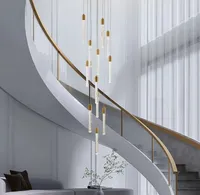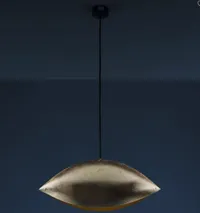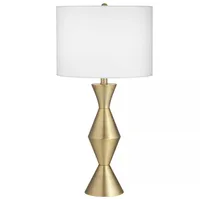Should a living room have a ceiling light? Finally, design experts settle the debate
Should a living room have a ceiling light? We talk to the experts in the know to settle the hotly disputed debate
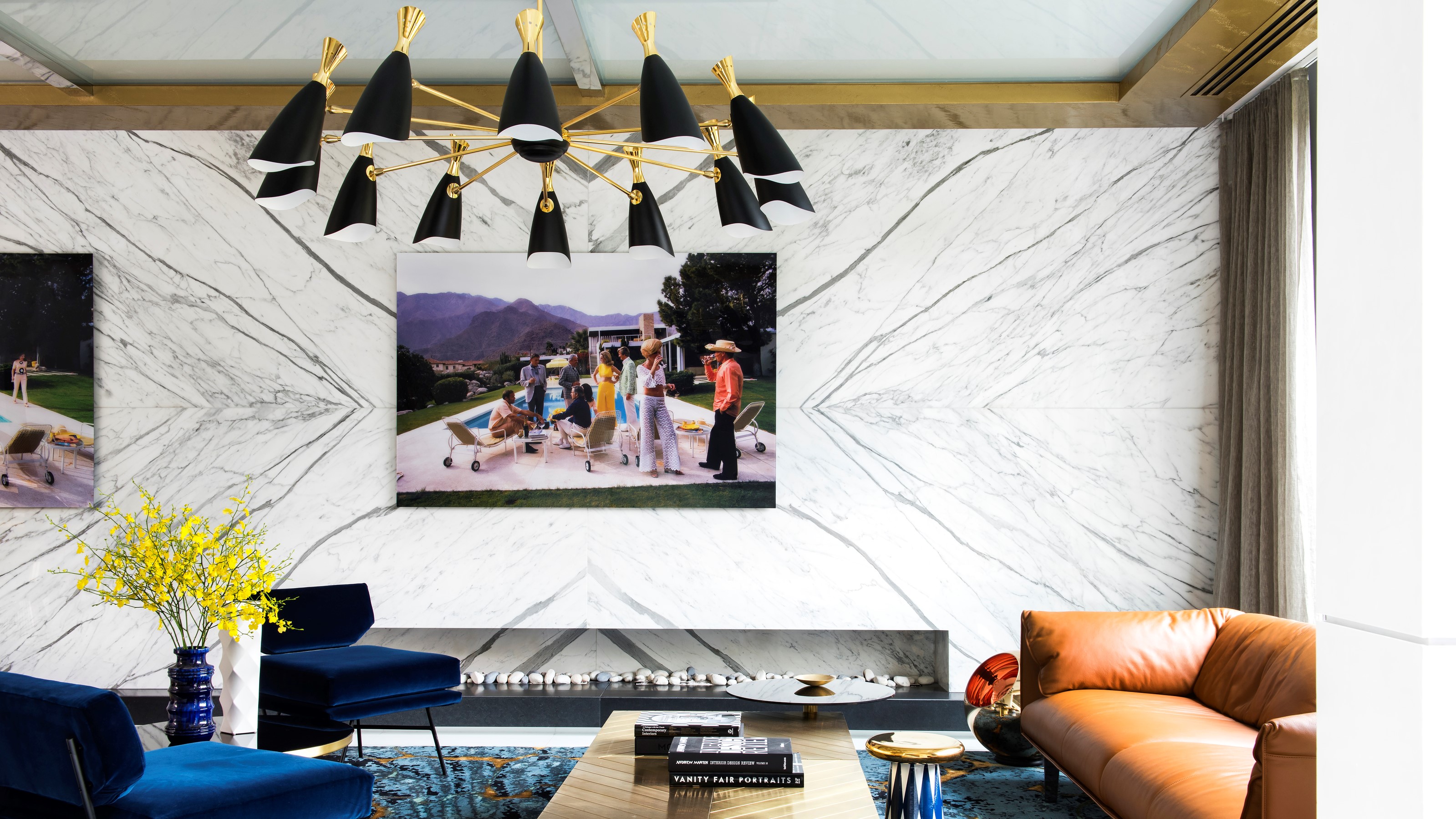

Whether or not your living room should have a ceiling light is a tricky decision to make. The obvious conclusion might be that yes, your living room should have a ceiling light, but in a well-lit lighting scheme, supplementary light sources might do more than your overhead lighting to provide atmosphere.
Answering this question depends on multiple factors – what mood do you want to create? How much are you willing to layer your scheme with supplementary lighting? How big is your living room? And do you want to use your lighting in a decorative way or as a functional necessity?
'Lighting has always been an art form. Now – more so than ever – it feels like a science – and one that’s quite easy to get lost in,' says Monique Tollgård, head of interior design of Tollgård Design Group. 'In essence, though, lighting is a language. When spoken beautifully, it promotes warmth and communication. It draws focus to what needs to be illuminated and creates darker, moodier pools where the eye doesn’t need to be drawn. When spoken badly, it results in grids of downlights and a tone-deaf outcome that lights a room from the top down with little regard for what needs to be lit.'
With this in mind then, we talk to living room lighting experts to find out what is best for your home.

Oonagh is an experienced homes and interiors writer and editor. For this piece, she spoke to the various architects and lighting designers in her contacts black book to get their top tips on how to beautifully light a living room, and get their thoughts on how important ceiling lights actually are in a well-lit scheme.
Should a living room have a ceiling light?
Living rooms are most commonly lit with a mix of lighting, including overhead (or ambient), accent, and task lights, but if the layers of light do a good enough job, ceiling lights might not be crucial to the scheme.
Ceiling lights are often not the key component in the lighting scheme either, with many designs being about the decorative aspect, rather than lighting. Task and accent lighting helps create a warm and cocooning feel in your living room alone.
‘The living room is a place for relaxing, and lighting is crucial for creating the right mood for this. If the lighting is very harsh and cold, it creates a space that feels unwelcoming and clinical,' says Will Earl Design Director of lighting brand J Adams & Co.
The Livingetc newsletters are your inside source for what’s shaping interiors now - and what’s next. Discover trend forecasts, smart style ideas, and curated shopping inspiration that brings design to life. Subscribe today and stay ahead of the curve.
'Lighting in the living room should be inviting and warm – done right, it will make a space feel ‘natural’ and allow people to feel relaxed and happy without them even realizing it.’
This begs the question, do you need to have overhead lighting when there are so many other layers that can give real impact? We weigh up the pros and cons below.
The pros of ceiling lights

A ceiling light can act as the first layer and foundation in your layered lighting scheme. It's a place from which to build, supplementing your ceiling light with other forms of lighting in the living room along the way. Recessed lighting can help to make sure that no part of the living room goes unlit. With downlights equally spaced out throughout the ceiling, and all forms of ceiling lights can be linked to a dimmer, meaning you have control over how much light you fill the room with.
What's more, ceiling lights can add design detail and personality. 'I do love a statement ceiling light – a chandelier or pendant lighting idea in a living room can add to the drama, mood, and energy of the whole space,' says Noor Charchafchi, founder and CEO of Celine Interior Design.
Monique Tollgård of Tollgård agrees: 'We are big fans of decorative ceiling lights. They focus the eye and create an architectural axis or focus point. They create a reason for something like a dining table to be where it is. Pendants or chandeliers can be used to create soft pools of light rather than pinpoints and can often radiate light out from 360 degrees rather than straight down,' she says.
Lastly, a ceiling light can also help create an illusion of height. A dangling light fixture draws the eyes upwards and can be a clever trick on the eye, while flush-mounted ceiling lights stuck to the ceiling can also help create the feeling of height in a room. The above statement piece was used in a scheme by interior designer Noa Santos of Nainoa to add some real drama and height to the space.
12-Light Crystal Chandelier by Amazon
If you have high ceilings, accentuate the design and use height to your advantage with a long chandelier that cascades down and draws your eye upwards.
The cons of ceiling lights
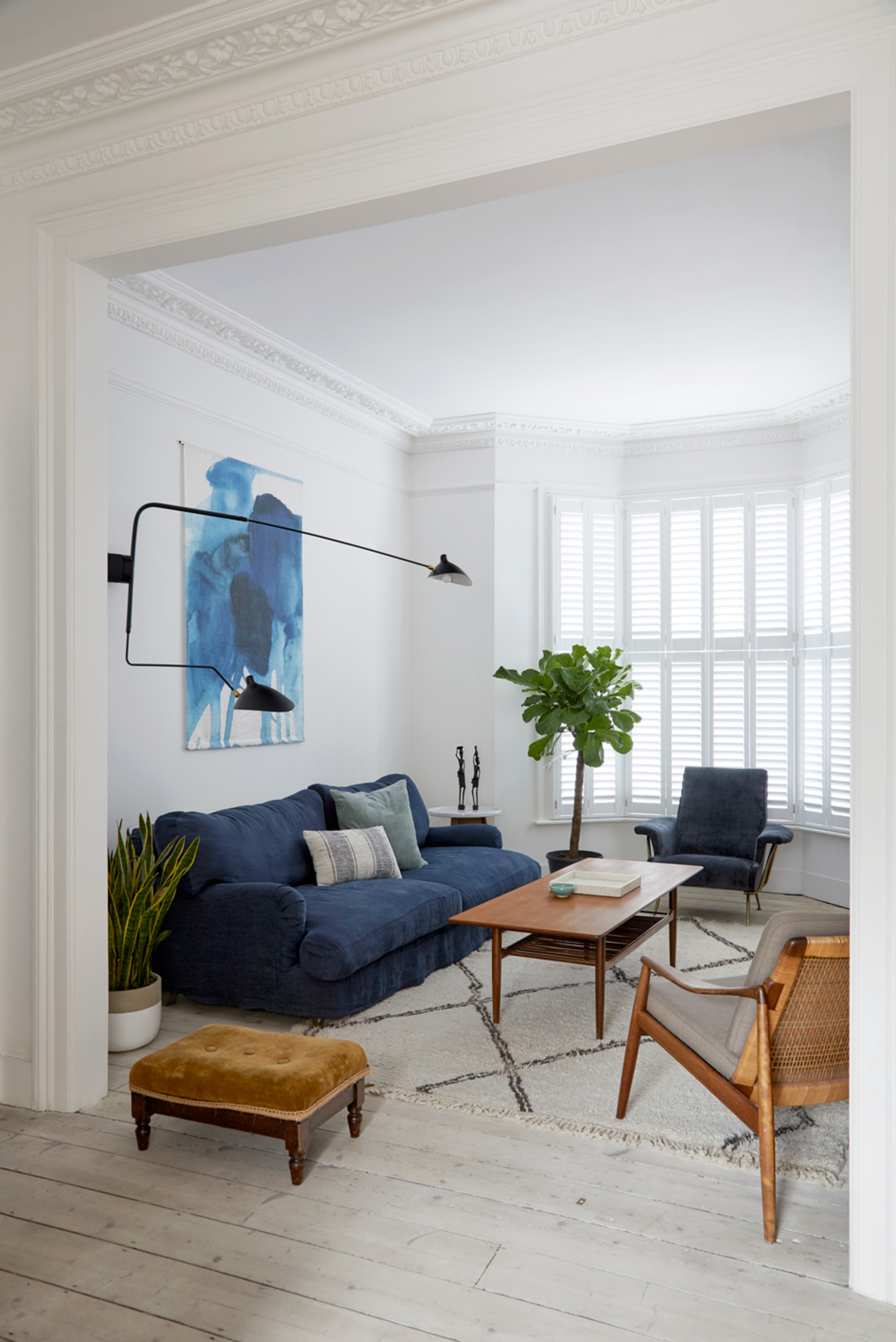
Firstly, including a ceiling light can add decorative clutter to a living room, whereas not including a ceiling light keeps things visually calm, clean, and in line with minimalist interior design. To evaluate whether a statement ceiling light is a good option for you, you need to consider the dimensions of your living room.
'Choosing the right light depends heavily on the ceiling height and the existing scheme,' says Noor. 'A room with a low ceiling is better left without a central pendant or ceiling light and similarly, a room that feels quite full in terms of its design and style often doesn’t require an additional statement light as it can create a look that is too busy.'
Another common problem with statement ceiling lights is that they often emit more heat than other lamps. This means they can cause uncomfortable temperatures in high-traffic areas or near windows. Additionally, these bulbs require more maintenance than other lighting options, which can include changing the bulb every few years or so.
Finally, a statement light might look beautiful, but consider whether it is a piece of decorative furniture or if it is kicking out enough light.
'Some statement lights don’t always give a ton of light, so you have to be careful to check your needs and expectations,' says Jennifer J. Morris, interior design and principal at J Morris. Consider if this ceiling light throws out enough light for you to take on tasks. Equally, some ceiling lights add too much light to the scheme. Recessed lights can often be too bright.
‘Lighting sndhould not shine directly in someone’s eyes. Ever!’ instructs interior designer Joy Moyler. Combat this by researching how to layout recessed lighting to avoid the airport runway effect on your ceiling.
What ceiling light options are there?
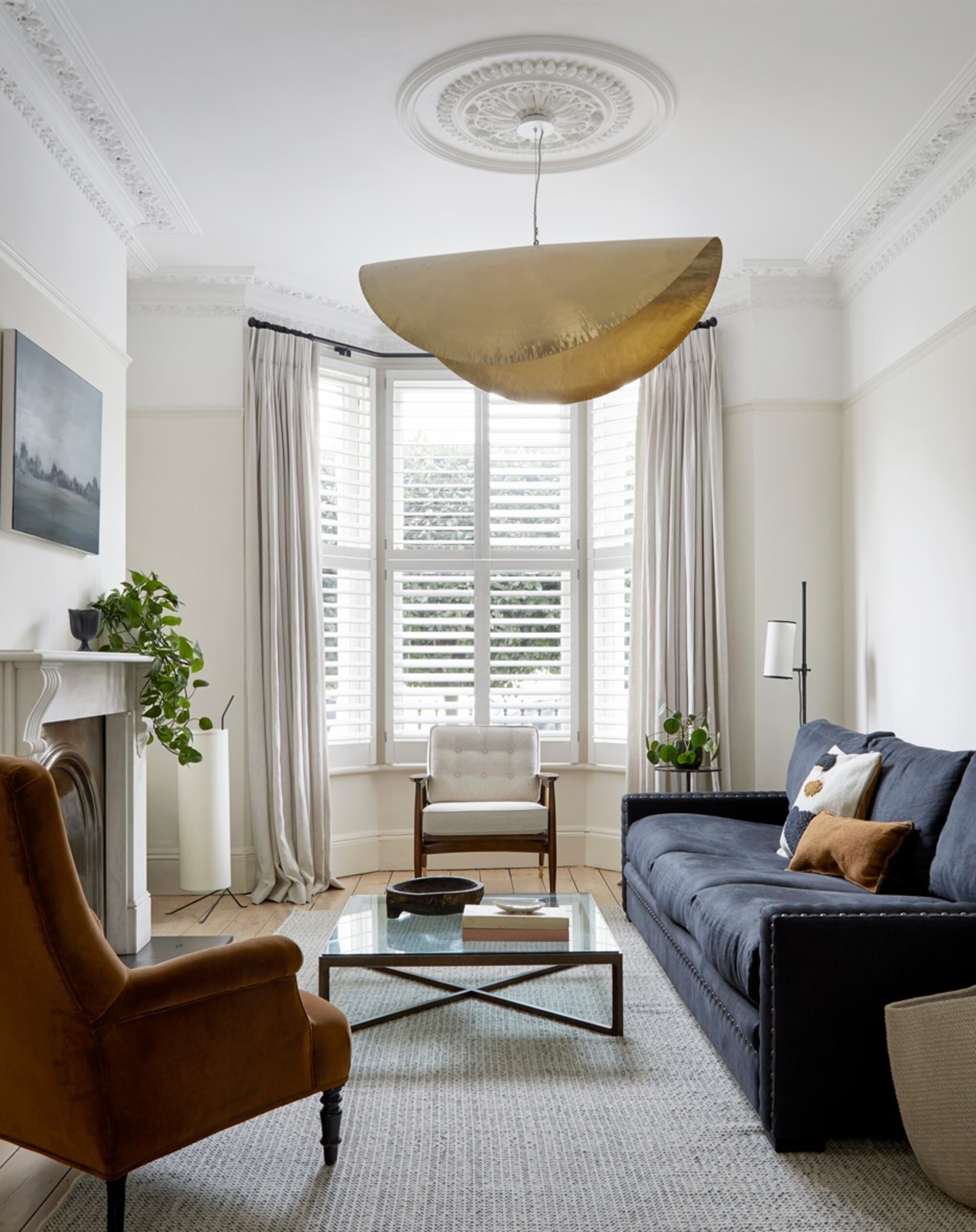
Living room ceiling lights can be statement chandelier-type light fixtures, pendants, flush-mounted ceiling lights, recessed and track lighting, or LED strip lights concealed within crown molding.
A statement or chandelier-type light or pendants are very popular in the living room. Chandelier and statement fixtures hang down from the ceiling, dangling in the center and help zone the space and provide a real focal point. They are often found in the living room for design purposes, not necessarily to give out the most lighting.
Pendants typically hang lower than statement lights or chandeliers and often have a decorative aspect to them too. While they were traditionally reserved for the kitchen – hanging elegantly over a dining table or kitchen island, they are making their way into the living room and even bedrooms.
Flush-mounted ceiling lights are another style of living room light fixture, sitting directly on the ceiling, typically rounded in style, shining light downwards.
Recessed lights or downlighting is also commonly found in living rooms. A fixture is installed into a hollow opening in the ceiling and the light focuses in a downward direction as a broad floodlight or narrow spotlight.
‘Recessed lighting produces a nice even light without interrupting the clean minimal lines of the ceiling,’ says Alex Terry of Terry and Terry Architecture. 'When recessed lighting is laid out and adjusted for the specific space it can create a well-balanced light throughout the space.'
Finally, track lighting is another ceiling light in the market, giving a mid-century, stylish vibe. Lights are fitted on tracks, and each light can be twisted to face a specific direction.
An eye-catching display with calming curves, the Malagola pendant brings a glimmer of gold into your living room.
What could you have in place of ceiling lights?
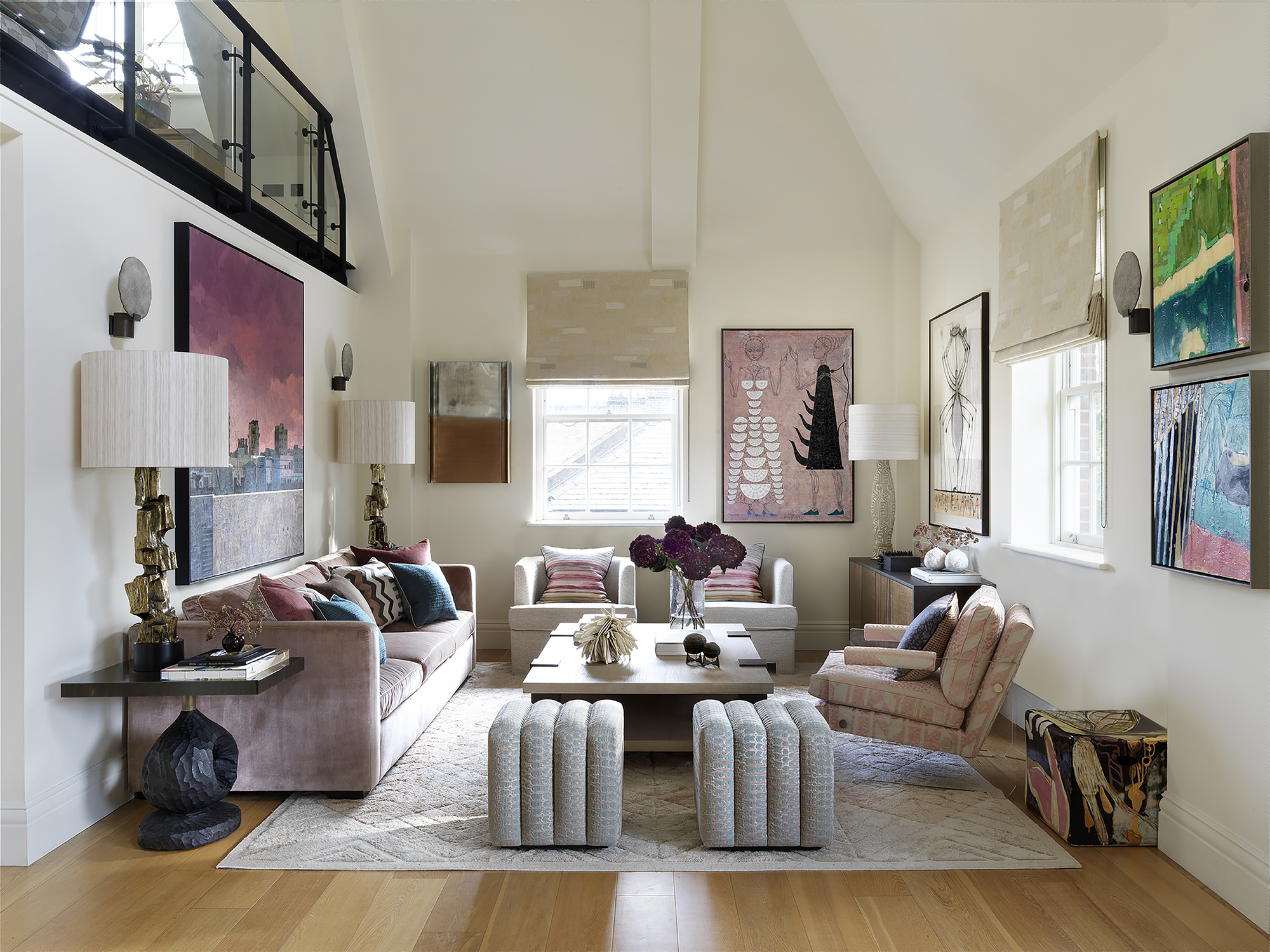
Instead of using ceiling lighting, why not go for a layered lighting scheme featuring wall lights, sconces, and a selection of your favorite lamps, as seen in this design in Natalia Miyar's home? There are no hard and fast rules as to how many lights you should have in the living room, and it is based on the size of the room, whether it is open plan or closed off, and what kind of mood you want to create.
Task lighting can help create a reading nook, while a floor light can add height to your scheme and help light up a dark corner. 'In a living room the use of wall lighting and table lamps are a great alternative to ceiling light,' says Lesley McClennan of Design Consultant.
Mid-Century Modern Table lamp by Target
Go for a look like Natalia's with a cute, gold base table lamp, which will help create that desired layered effect.
What are the benefits having all sources of lighting?

Ultimately, the best way to light your living room is to layer using all sources of light, including a ceiling light. Just be aware of the above potential flaws with ceiling lights, making sure the ceiling light you choose doesn't overwhelm the space or create too harsh or too little light. Good lighting is all about layering, so make sure any overhead lighting you go for has a dimmer switch.
Remember it's not enough to just have overhead lighting, so supplement your ceiling light with task and accent lights dotted around the room, as well wall sconces, and keep things balanced in the space. If you are coordinating lighting for an open-plan living room, use recessed lighting as well as statement light fixtures.
'We think in layers of light and compose a language with equal parts of light from a low level, high level, from the wall and task lighting. We think in terms of functional sculpture as well, so that the feature pendants or wall lights are as beautiful off as well as on. And we consider what the lights look like from the outside of the house,' says Monique.
Eugene Colberg, principal at Colberg Architecture sums it up succinctly: ‘It’s not the number of light fixtures, but the amount of lighting, that matters.'

Former content editor at Livingetc.com, Oonagh is an expert at spotting the interior trends that are making waves in the design world. She has written a mix of everything from home tours to news, long-form features to design idea pieces, as well as having frequently been featured in the monthly print magazine. She is the go-to for design advice in the home. Previously, she worked on a London property title, producing long-read interiors features, style pages and conducting interviews with a range of famous faces from the UK interiors scene, from Kit Kemp to Robert Kime. In doing so, she has developed a keen interest in London's historical architecture and the city's distinct tastemakers paving the way in the world of interiors.
